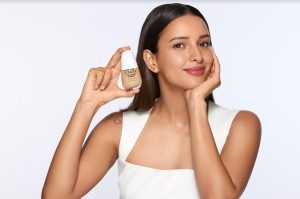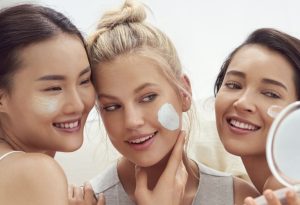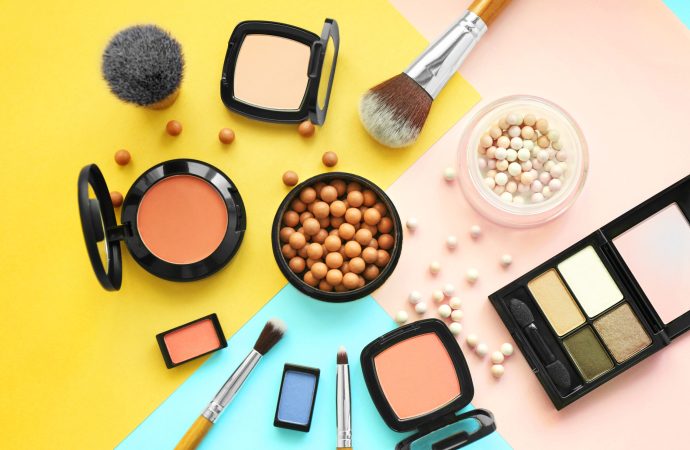Introduction The cosmetics market has grown into one of the most dynamic and influential sectors of the global economy. Over the years, it has evolved from basic personal care products into a diverse and innovative industry that caters to beauty, wellness, and self-expression. The market encompasses a wide array of products, including skincare, haircare, makeup,
Introduction
The cosmetics market has grown into one of the most dynamic and influential sectors of the global economy. Over the years, it has evolved from basic personal care products into a diverse and innovative industry that caters to beauty, wellness, and self-expression. The market encompasses a wide array of products, including skincare, haircare, makeup, fragrances, and personal hygiene products. With changing consumer lifestyles, increasing awareness about beauty and grooming, and constant product innovation, the cosmetics market continues to expand at a rapid pace.
Market Overview

Image by: Yandex.com
The global cosmetics market is characterized by its diversity in product offerings, brands, and consumer segments. Skincare remains the largest category, driven by increasing demand for anti-aging solutions, natural and organic products, and daily-use essentials like moisturizers and sunscreens. Makeup follows closely, with consumers increasingly seeking innovative formulations, long-lasting effects, and vibrant colors. Haircare products, including shampoos, conditioners, hair treatments, and styling products, also contribute significantly to market growth.
The market caters to different demographics, from millennials and Gen Z who prioritize bold and trendy looks, to older consumers seeking anti-aging and skin-repair solutions. Moreover, male grooming products have emerged as a rapidly growing segment, with men increasingly investing in skincare, beard care, and hair styling.
The global cosmetics market encompasses a wide range of products, including skincare, makeup, hair care, personal hygiene, and fragrances. The sector is influenced by cultural trends, fashion movements, and innovations in manufacturing.
In recent years, skincare has emerged as the largest segment due to growing awareness about health and wellness. Makeup and hair care products continue to evolve with new formulations, colors, and styles to match global trends. The demand is fueled by both developed and emerging economies, making the cosmetics industry a truly international market.
Key Trends Shaping the Cosmetics Industry
1. Rise of Clean and Natural Beauty Products
Consumers are becoming more conscious of what goes into their cosmetics. There is a growing demand for products free from harmful chemicals, made with natural or organic ingredients, and produced in eco-friendly ways.
2. Personalization and Customized Solutions
From personalized skincare regimens to foundation shades tailored to specific skin tones, customization is becoming a major selling point. Technology allows brands to offer personalized recommendations through skin analysis tools and online quizzes.
3. E-commerce Expansion
Online shopping has transformed how consumers buy cosmetics. Social media platforms, influencer marketing, and direct-to-consumer brands have made beauty products more accessible, often with virtual try-on features for a better experience.
4. Men’s Grooming Segment Growth
Men are increasingly becoming key consumers in the cosmetics market. Products such as beard oils, skincare for men, and male-targeted fragrances are becoming mainstream.
5. Technology Integration
Augmented reality (AR) tools allow consumers to try products virtually before purchase. Artificial intelligence (AI) is used to recommend products based on personal preferences and skin conditions.
6. Focus on Sustainability
Eco-friendly packaging, refillable containers, and cruelty-free testing are becoming industry norms as brands respond to environmental concerns.
Growth Drivers of the Global Cosmetics Market
- Rising Disposable Income: More consumers, especially in developing economies, can now afford premium beauty products.
- Urbanization and Lifestyle Changes: Busy lifestyles and exposure to media increase demand for convenient and trendy products.
- Influence of Social Media: Platforms like Instagram, YouTube, and TikTok play a huge role in shaping beauty trends and encouraging purchases.
- Product Innovation: Brands continually develop new formulas, textures, and application methods to attract customers.
- Expanding Middle Class in Emerging Markets: Countries in Asia, Africa, and Latin America are witnessing a surge in cosmetic consumption.
Market Challenges
- High Competition and Brand Saturation The cosmetics market is highly competitive, with numerous global, regional, and niche brands vying for consumer attention. Differentiating products and maintaining brand loyalty is a constant challenge.
- Regulatory Compliance Cosmetics are subject to strict regulations regarding safety, labeling, and claims. Meeting international standards can be complex for brands operating in multiple markets.
- Counterfeit Products The proliferation of counterfeit cosmetics poses a risk to both consumers and brands, affecting trust, safety, and brand reputation.
- Changing Consumer Preferences Rapidly shifting trends and customer preferences mean brands must be highly adaptive. Failure to align with evolving consumer expectations can result in loss of market share.
Regional Insights
- North America The North American cosmetics market is mature, with high penetration of premium and luxury brands. Consumer focus on high-quality, safe, and sustainable products drives innovation.
- Europe Europe has a strong market for organic and clean beauty products. Regulatory standards are stringent, encouraging brands to prioritize product safety and environmental responsibility.
- Asia-Pacific Asia-Pacific is the fastest-growing market, led by countries like China, Japan, South Korea, and India. K-beauty and J-beauty trends have significantly influenced global cosmetic innovations.
- Latin America Latin America shows rising demand for affordable cosmetics, with Brazil and Mexico emerging as key markets. Social media-driven beauty trends are shaping buying behavior.
- Middle East and Africa Rising disposable incomes and a growing interest in personal grooming have fueled cosmetics demand in this region. Premium and luxury brands have a strong presence.
Trends Shaping the Future of the Cosmetics Market
- Clean Beauty Movement The demand for clean, toxin-free, and sustainable cosmetics is expected to dominate the market. Transparency in labeling and ingredient sourcing will become a key brand differentiator.
- Inclusivity and Diversity Brands are expanding their product ranges to cater to diverse skin tones, hair types, and cultural preferences. Inclusive beauty is no longer a niche but a necessity.
- Hybrid and Multifunctional Products Time-conscious consumers are gravitating towards products that combine skincare and makeup benefits, such as tinted moisturizers with SPF or lipsticks with hydrating properties.
- Sustainable Packaging Eco-friendly and refillable packaging is gaining popularity as consumers become more environmentally conscious.
- Personalization and Customization AI and data analytics are enabling brands to offer personalized product recommendations, custom formulations, and targeted marketing campaigns.
- Virtual Try-On Technology Augmented reality tools allow customers to test products virtually before purchase, enhancing online shopping experiences.
Competitive Landscape

Image by: Yandex.com
The global cosmetics industry is dominated by multinational giants and innovative indie brands. Major players often focus on research and development, marketing campaigns, and celebrity collaborations to maintain market dominance. Indie brands, on the other hand, leverage unique formulations, niche markets, and authenticity to gain traction.
Key competitive strategies include:
- Launching limited-edition collections to create urgency.
- Expanding into emerging markets to capture new customer bases.
- Partnering with influencers and celebrities for product endorsements.
- Investing in sustainable and ethical business practices.
Future Outlook
The cosmetics market is expected to witness continued growth, driven by technological innovation, expanding product categories, and increasing consumer awareness. The integration of wellness, skincare, and beauty is likely to create hybrid segments, offering both aesthetic and health benefits.
Emerging economies present vast opportunities for expansion, with younger populations eager to explore new beauty trends. However, success will depend on brands’ ability to adapt to local preferences, regulatory requirements, and competitive dynamics.
In the coming years, digital channels will further dominate cosmetics sales, supported by advanced AI tools, immersive shopping experiences, and influencer-driven marketing. Brands that combine innovation with ethical practices and inclusivity will be well-positioned to thrive in this competitive landscape.
Future Opportunities in the Cosmetics Market
- Inclusive Beauty: Offering a wider range of shades and products for all skin types.
- Hybrid Products: Combining skincare and makeup, such as foundations with SPF or serums with tint.
- Subscription Models: Monthly beauty boxes and curated kits for convenience and discovery.
- Wellness Integration: Products that support overall health, such as vitamin-infused lip balms or probiotic skincare.
- Digital-First Brands: Leveraging e-commerce and social media for direct consumer engagement.
Conclusion
The global cosmetics market continues to be a vibrant, fast-paced, and highly adaptive industry. From skincare and makeup to haircare and fragrances, cosmetics have become an integral part of daily life for millions of consumers worldwide. With shifting beauty standards, technological advancements, and a growing emphasis on sustainability, the industry’s future holds immense potential. Companies that embrace change, understand consumer needs, and remain committed to quality and ethics are set to flourish in the evolving beauty landscape.
Read More Details: https://www.databridgemarketresearch.com/reports/global-cosmetics-market
















